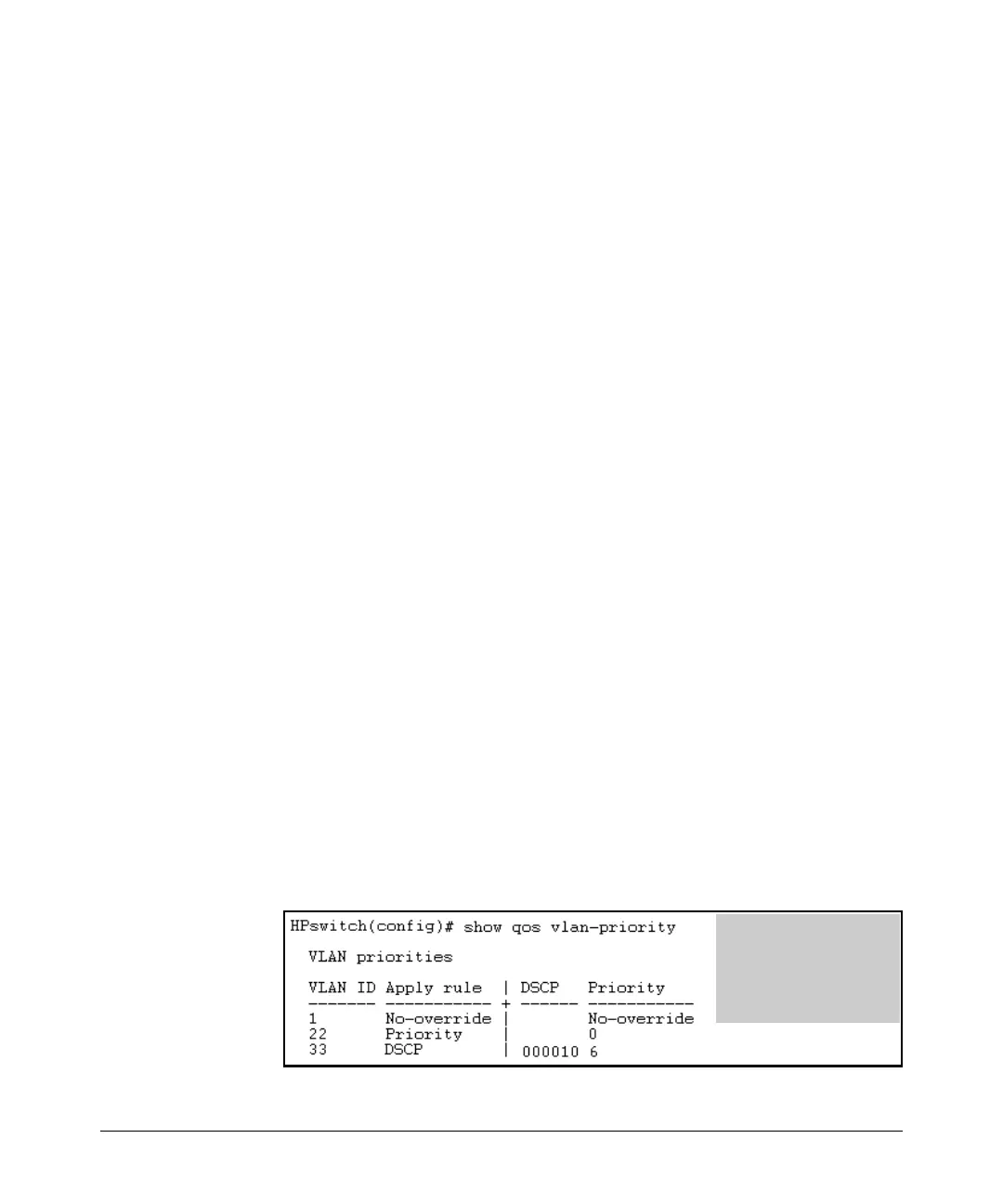Quality of Service (QoS): Managing Bandwidth More Effectively
Using QoS Classifiers To Configure Quality of Service for Outbound Traffic
type-of-service
Displays the current type-of-service priority configu-
ration. The display output differs according to the ToS
option used:
■ IP Precedence: Refer to figure 8-16 on page 8-37.
■ Diffserve: Refer to figure 8-18 on page 8-41.
protocol-priority
Available on the 5300xl switches only. Displays the
current protocol priority configuration.
vlan-priority
Displays the current VLAN priority configuration.
Refer to figure
8-26 on page 8-53.
port-priority
Displays the current source-port priority configura-
tion. Refer to figure 8-31 on page 8-58.
No Override
By default, the IP ToS, Protocol, VLAN-ID, and (source) port show outputs
automatically list No-override for priority options that have not been config-
ured. This means that if you do not configure a priority for a specific option,
QoS does not prioritize packets to which that option applies, resulting in the
No override state. In this case, IP packets received through a VLAN-tagged port
receive whatever 802.1p priority they carry in the 802.1Q tag in the packet’s
header. VLAN-Tagged packets received through an untagged port are handled
in the switch with “normal” priority. For example, figure
8-7 below shows a
qos VLAN priority output in a switch where nondefault priorities exist for
VLANs 22 and 33, while VLAN 1 remains in the default configuration.
This output shows that
VLAN 1 is in the default
state, while VLANs 22 and
33 have been configured
for 802.1p and DSCP Policy
priorities respectively.
Figure 8-7. Example of the Show QoS Output for VLAN Priority
8-23
